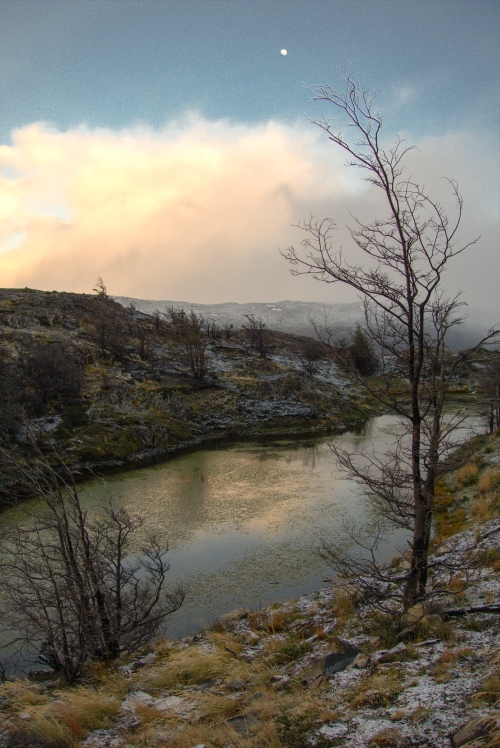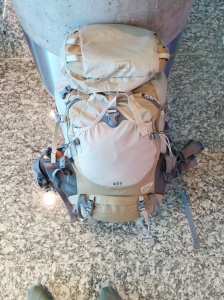Our jaunt through Ecuador got off to a suspect start with a couple of days in Quito. While an interesting setting consisting of a sprawling city of various colored buildings across very green mountains, our primary focus soon became our safety. I won’t use this as an exercise in suspense – we are fine and had no bad experiences, but it seemed the first thing that everyone wanted to share with us. Having traveled through a handful of countries in South America thus far, I understand I must be careful and smart, but for some reason, Quito seemed to be more extreme. It’s still unclear whether it is indeed true, or whether the people are just more insistent on communicating it. Having the message pretty much pounding into our heads, we played it extra safe and took taxis (which are cheap) when going very far or going anywhere at night. As a result, we don’t have so many adventures or interesting experiences to report, but we can also say we experienced no harm nor theft. To sum it up, we wandered the historical part of town, visited a cathedral, ate dinner on the cute and lively Rotunda street, and experienced the horrid Mariscal district with house music pouring out of every bar we walked by started around 4pm. Our hostel was a nice exception to the general experience – Hostal Quito Cultural – housed in a quaint old building in the historical part of town with very friendly owners and an above average breakfast.
Things smoothed out from here as we made our way to Baños, a small touristed town known for its hot springs. We ventured out on a few day hikes, both times seeming to come to the end just in time for the rain to start. We also enjoyed a couple of meals at Stray Dog Brewpub, a rare find in Ecuador with different microbrews. I happily sampled their sour brown ale and IPA, while dad stuck to the stout and mom, of course, red wine.
From Baños we left for Canelos and our trek into the jungle to stay at Huella Verde, a couple cabañas owned by a Swiss guy and his Ecuadorian wife (who have the cutest son, Tiago). For me, the highlights were the hike through the jungle, relaxing in the hammocks, swimming in the river, and the impressive food prepared by the owners. I would never have expected to eat so well during a stay in the jungle.
We squeezed a few more adventures into the last few days of my parents’ trip, including a stay in an old, slightly run down hacienda, a visit to Quilatoa Lake, and a trip into an abyss for our last night in Papallacta. No joke, we drove for what seemed like an eternity (aka an hour) through windy roads in between mountains and enveloped in mist until we arrived at a rather impressive resort with hot springs outside of each room. I’ll say it was a nice way to end their stay. I was tempted to stay on by myself for another night but couldn’t quite justify the cost for just me.
Overall, it was a blast to be able to spend this time in Ecuador with my parents. I was continually impressed with their ability and willingness to “rough it” with me and travel closer to my style. On our last day I was inspired to ask them for a little contribution, so below is bit on the journey from their perspective.
Courtesy of Mom & Dad:
From the moment that Michele decided to quit her job and travel extensively with a backpack in South America, she encouraged us to join her for some part of it. As it worked out for us, the best timing was when she would be in Peru and Ecuador and it just so happened, we would also be there for her birthday. So, we booked our tickets and headed off for our adventure. An adventure it was! Although we took suitcases, not backpacks, our plan from the beginning was to experience this in much the same way that Michele was. So, we stayed in hostels or guesthouses and except for our flight from Peru to Ecuador, mostly took buses. A few nights, we shared a room with Colin and Michele and many nights, we shared with Michele. Most places had no heat (and it was cold!), but they all had warm blankets. We did always have our own bathroom and for the most part, hot water was available when we took showers. Eating too, was at times an adventure, but we were game for most of it, drawing the line at Cuy (guinea pig), an Andean specialty.
In Peru, we visited Cusco, Pisac, Ollantaytambo and Machu Picchu. We spent longer in Ecuador and visited Quito, Baños, the jungle near Canelos, the Quilatoa crater lake, and lastly, Papallacta, a hot springs resort in the hills east of Quito. Many of the places were at altitudes of 9000+. Our favorites were the visit to the Ollantaytambo town and archaeological site where we had a terrific local guide, and our drive to the Quilatoa crater lake which had gorgeous scenery along the way. Our favorite lodging was probably in Baños where we stayed at a rather stunning guest house built and run by an Australian/Kiwi expat couple. The most adventurous has to be the trip to the jungle. We were going to take 2 different buses to get there, but our taxi driver in Baños offered us a deal we couldn’t refuse for our first hop, so it was only one bus. Once we were there, we were picked up by our jungle lodge owner (Swiss expat) in his pick-up truck for a short ride to a clearing near the river (his parking lot). Then he gave us knee-high rubber boots and we tromped another 20 minutes into the jungle to reach the small lodge (only 2 cabanas and a main building for eating). Although we heard much about crime ahead of time and from locals, our scariest moments were probably in Ecuadorean cabs. Stop signs are suggestions and passing on mountainous highways, commonplace. Sort of an “E” ticket ride Ecuadorian style.
Most of all, this trip was about spending time with Michele. She is now 28 years old and has been on her own for several years. She is a capable, independent young woman. In fact, because of her Spanish language skills and her travel experience, she was our “leader”, a significant switch in the family dynamic from our travels as a family when she was younger. Safe travels Michele, we look forward to your return to SF.

















































































































































